Ingredients wise, pasta is one of the cheapest foods to make. All you need is some flour, eggs, and water. Anything else you’re getting fancy.
Ingredients aside, the art of making homemade pasta is more intricate than mixing up a few simple ingredients. You have to proof the dough, portion it out, roll it out (without it sticking or tearing), and cut it to your desired style.
One handy tool that will make your life easier, at least when it comes to the rolling and cutting part, is a pasta maker. There are three main types of pasta makers that you can buy, all of which have their pros and cons, but they all can churn out delicious homemade pasta.
Best Overall Pasta Maker: Marcato Atlas 150 Pasta Machine
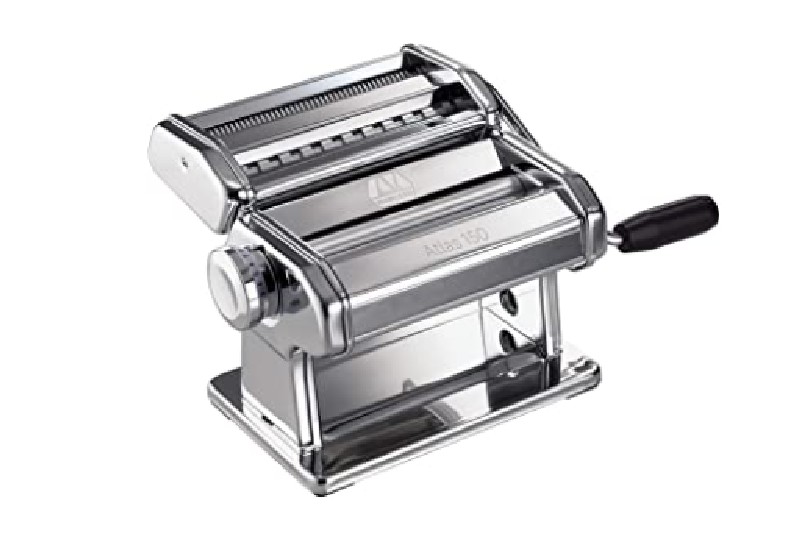
This Italian-made, hand-crank pasta maker from Marcato is dependable and easy to use. How you make your pasta is always a personal preference, but we like the ability to control the speed at which the dough feeds through the machine. The crank on this pasta maker is smooth and virtually effortless. Plus, it has a drive motor that you can buy separately and attach if you want to graduate to a motorized version. It comes with three pasta inserts (lasagne, fettuccine, and tagliolini) and a two-year manufacturer warranty.
Best Electric Feed-Through Pasta Maker: Shule Electric Pasta Maker
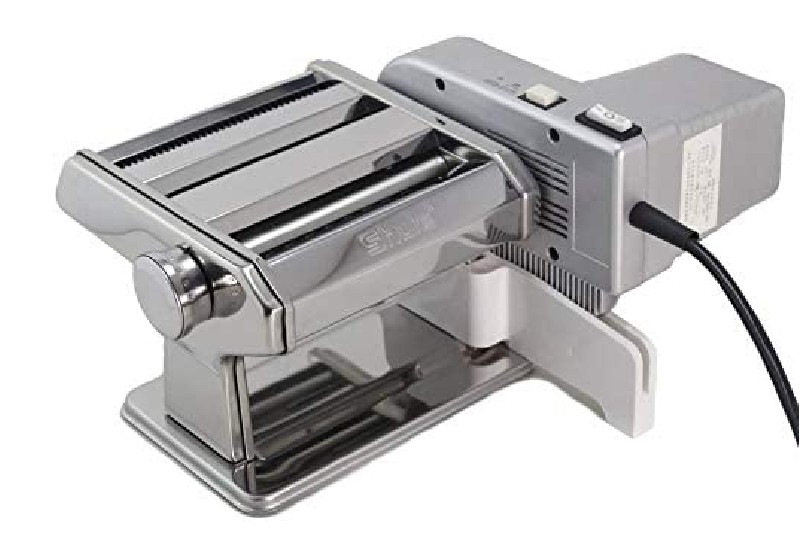
This motorized feed-through pasta maker from Shule can churn out as much pasta as you can throw at it. It has two speeds and a pause button that comes in handy when you have to clear out the pasta. It also comes with three different pasta blades.
Best Stand Mixer Attachment: Antree 3-in-1 Pasta Maker Attachment

This 3-in-1 pasta maker attachment from Antree does it all without having to worry about multiple parts. Simply adjust the knob to the desired function and slide the dough through the appropriate slot. It also has an 8-gear adjustment knob to adjust the desired thinness of the pasta. Note that this attachment (and most others) say that it’s designed for a KitchenAid stand mixer. However, the pasta maker attachment port is fairly universal across the board. So if you have a different stand mixer with pasta-making capabilities, say a Cuisinart, it should work.
Best Budget Pasta Maker: Jomugy Pasta Maker

This Jomugy pasta maker is the made in China version of the Marcato. It performs the same function at a fraction of the price. This is a good starter pasta maker for anyone curious about pasta making but may not fully commit to the homemade pasta life.
Best Pasta Maker Attachment Set: NevKu Pasta Maker Attachments Set
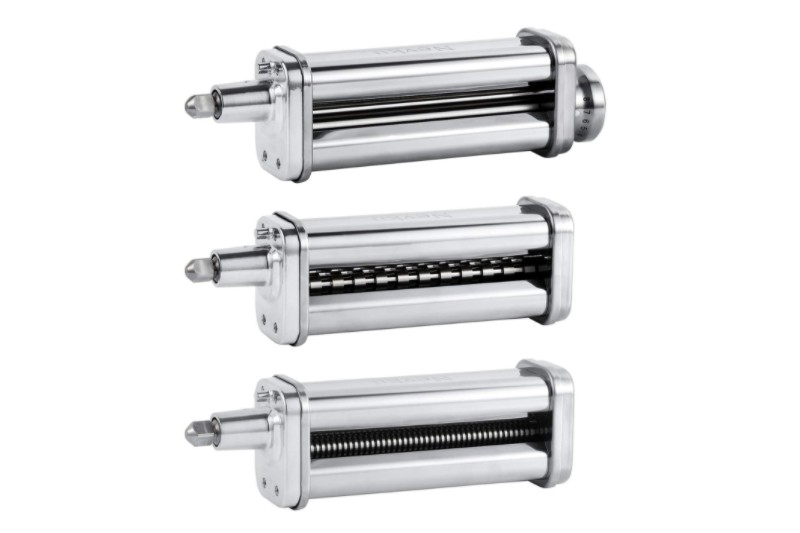
If you’re an avid pasta maker and prefer the stand mixer method, using separate attachments may be a bit more work than a 3-in-1 device. Still, it could be beneficial in the long run. Over time, repeatedly switching from the roller to the cutter function in a 3-in-1 attachment can wear it out. When changing out attachments that only have one job, you may be sacrificing convenience. Still, there are fewer moving parts and therefore less risk of it breaking.
Best Stand Alone Pasta Maker: Philips Pasta and Noodle Maker Plus
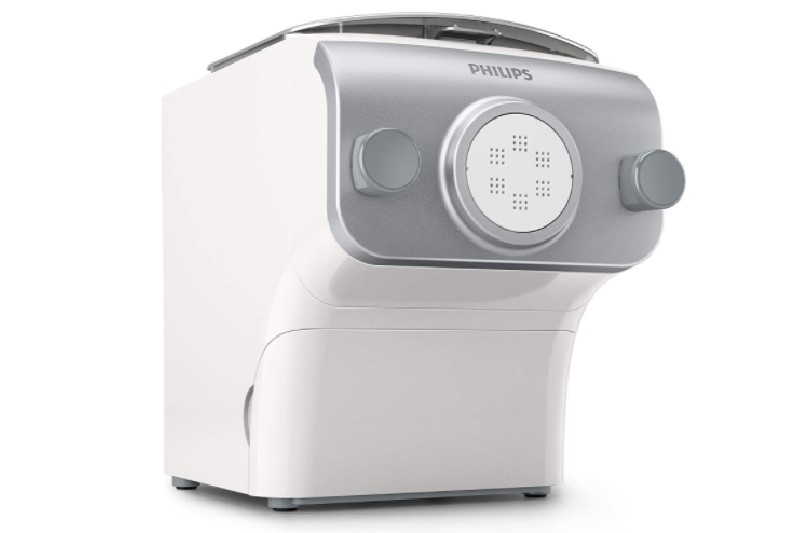
If you’re a done-for-you kind of guy, this pasta machine from Philips is just the ticket. It can mix and pump out eight different types of pasta in 10 minutes. It’s crucial to follow the manufacturer’s suggested dough recipes when using a pasta machine like this. Making dough by hand for a feed-through maker is different than with an automatic pasta machine. The consistency may not seem right, but the end product will be perfect.
Best Spiralizer for Veggie Noodles: Sboly Vegetable Spiralizer

There may come a time when you realize you’re too into pasta and you need to cut back. This spiralizer from Sboly is an excellent way to sub-in veggie noodles in some of your favorite pasta dishes. It comes with five blades that let you vary your noodles’ width and thickness, and it does the job super-quickly. Due to their shape and texture, we found that zucchini, yellow squash, and carrots perform best in this spiralizer. But with a little trimming, you can make noodles out of more fruits and veggies than you may have thought.
Best Pasta Making Accessories
Hokichen Pasta Accessory Set
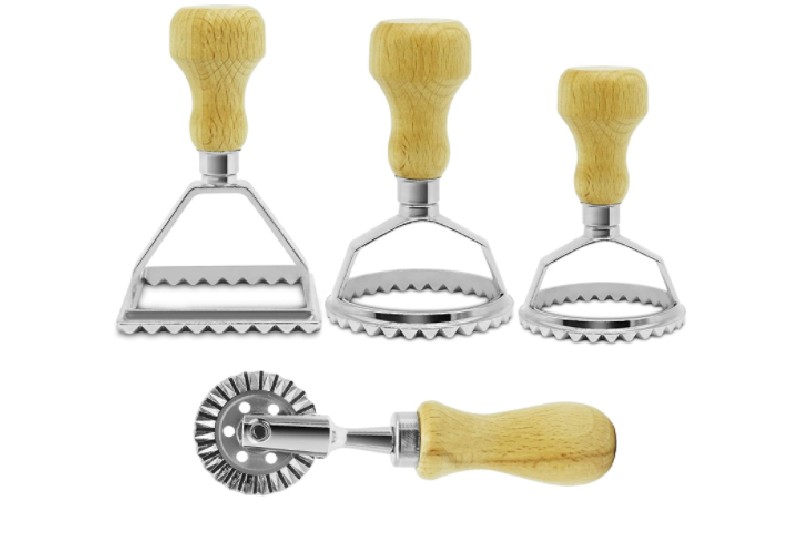
Pasta machines will roll-out perfectly flat dough to your desired width. However, suppose you’re trying to make ravioli or dumplings. In that case, you’re still going to devote some time to stuffing, cutting, and crimping. This accessory set from Hokichen has three ravioli/dumpling stamps of varying shapes and sizes that will make the job go by more quickly. The crimping/cutting wheel will seal-in your ingredients and is also great for cutting lasagna noodles to your preferred size.
Frantic Ray 5-Wheel Pastry Slicer

It’s always good to have an old fashioned pasta cutter on the ready in case your pasta machine decides to take a crap mid-preparation. Also, some pasta makers only have certain pasta cutting blades. So if you’re particular about the width of your noodles, this device might be you’re only option.
Norpro Pasta Drying Rack Wood

If you’re looking to dry your pasta for later use or just need somewhere to put your fresh noods while you finish your sauce, a pasta rack is the best way to go. It is also a good organizational tool during the pasta making process. If you don’t have the time or craft skills to make your own, this one from Norpro is a good, affordable option. It’s easy to disassemble for storage and gives you 72 total inches of pasta hanging space.
Types of Pasta Makers
Feed-Through Pasta Makers
These pasta makers handle the rolling and cutting for you after you make your dough. These come in three different styles; hand crank, motorized feed-through, and attachments.
The hand crank makers are pretty straightforward. They come with a vice grip, so you can attach it to your countertop, and different attachments (rolling, fettucini/spaghetti cutter are relatively standard). You feed it through the machine with one hand while you operate the roller crank with the other. This method usually requires a decent amount of counter space to accommodate the finished product.
Electric pasta makers are the same idea as the hand crank, except they come with their own motor. Attachment pasta makers hook-up to your stand mixer, which powers the roller/cutter. This method may take some practice when it comes to feeding the dough through the attachment. But watching a brief YouTube video should be able to get you up to speed quickly.
A quick PSA for these types of pasta makers; never wash them with soap and water. Use a stiff brush (a paintbrush work) to clear away any residue. At most, wipe them off with a damp rag. This is to keep the rollers working properly.
Automatic Pasta Machines
Automatic pasta machines take almost all the work out of making pasta. You simply add the ingredients, and it churns the dough and presses it through the pasta shaping attachment. You just have to monitor and cut the pasta as it comes out. Automatic machines sometimes involve some trial and error when it comes to perfecting the dough. They cut down drastically on the overall mess that comes with making and rolling out dough (flour gets everywhere). But, cleaning the machine parts on the back end is a major complaint of some users.
Now that you may have a better idea of what type of pasta maker might be right for you, check out our picks for the best ones.


